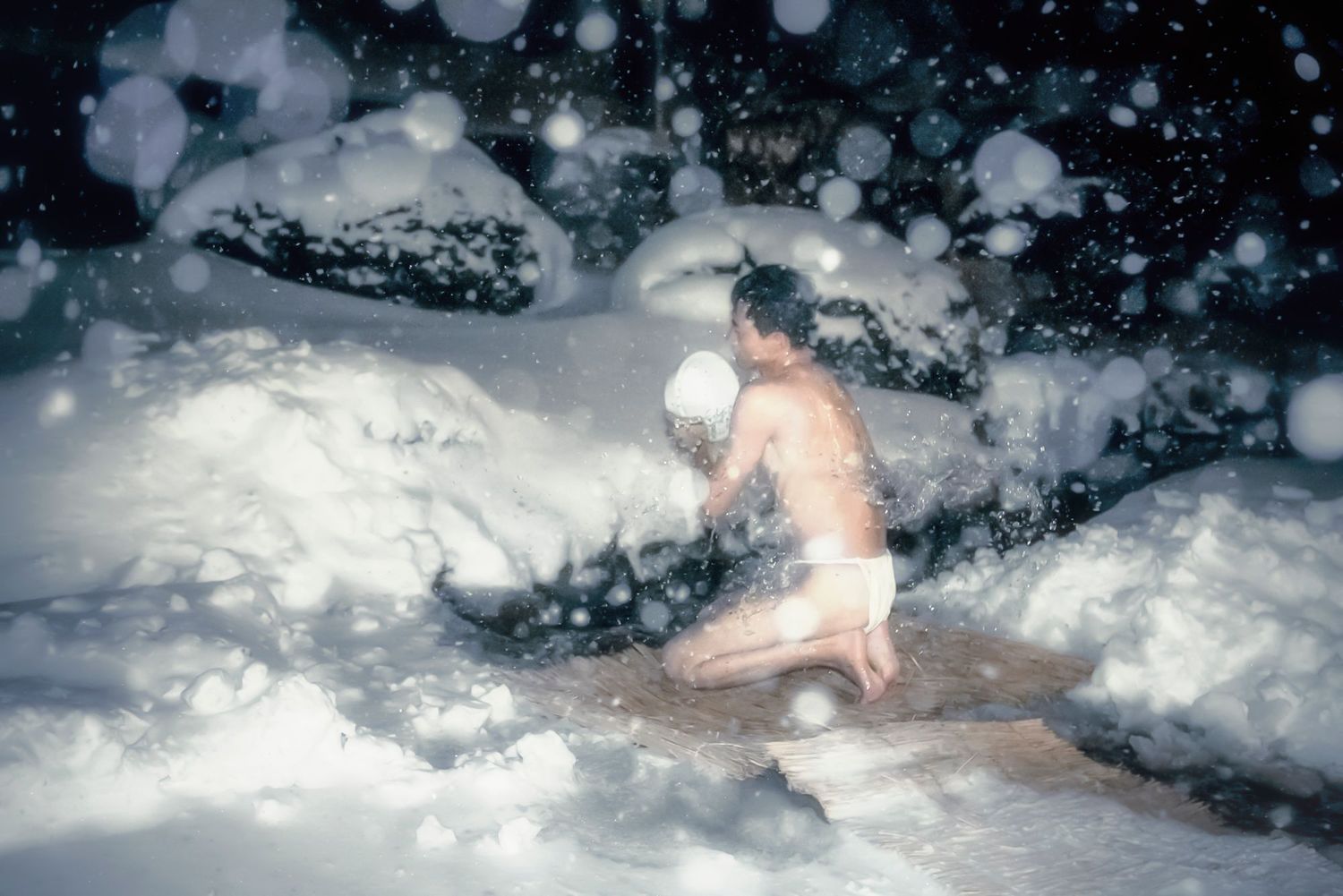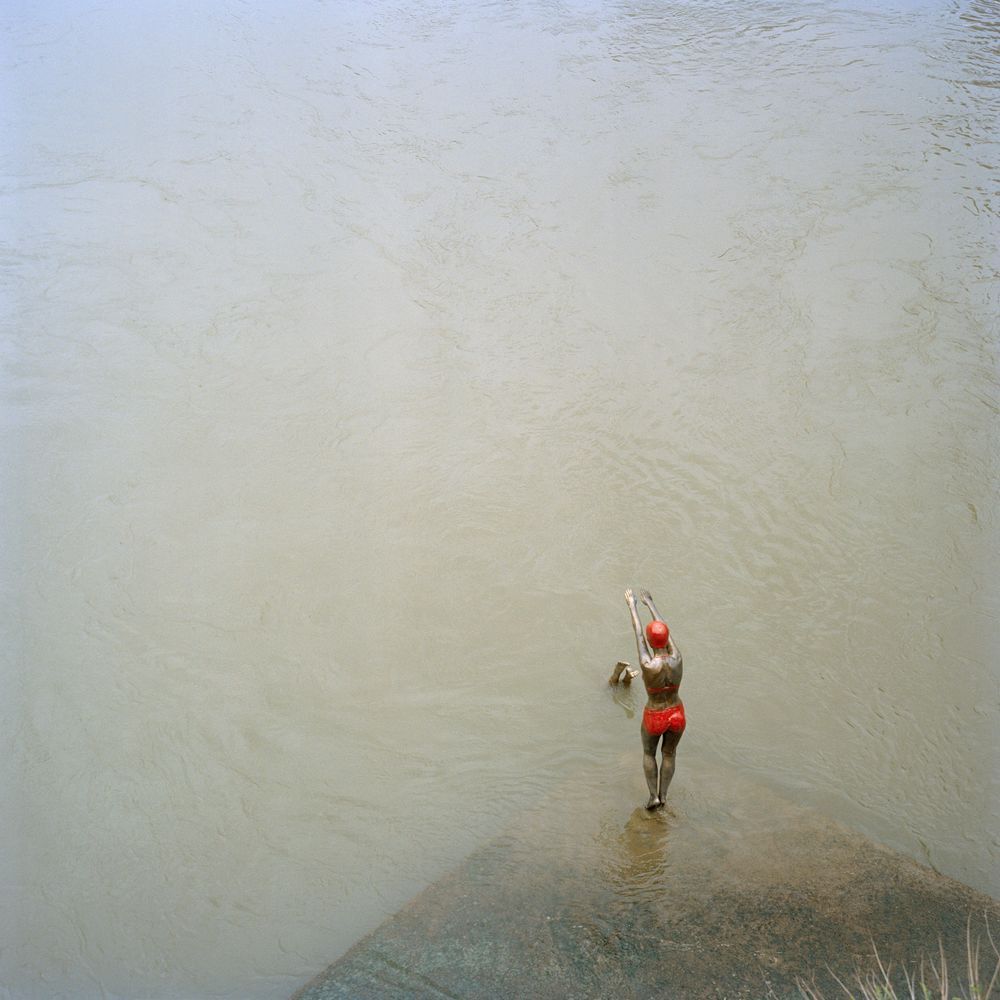Every year, the editors of LensCulture strive to discover and publish work by photographers that we hope will inspire and excite you. We are constantly scouring the globe in search of powerful photographs and series; artists with compelling, unique ideas; and events that will highlight and foster artists working in this universal, important medium.
The editors on our team have diverse experiences and tastes, and this variety means that we publish all kinds of photographic work created by practitioners across the globe. Sometimes we are drawn to publish uncompromising photojournalism; in other moments, our magazine features cutting-edge conceptual work, fine art projects, portraits, street photography, or enthralling visual stories that defy easy categorization.
This year’s selection of favorite features includes a striking range of genres, subjects, and media: an unusual black-and-white series from the Australian outback inspired by a hunt for gold; a review of a powerful and disturbing vision of life (and torture) in Guantanamo Bay; the deeply personal story behind a series of portraits that grapple with identity and race in South Africa; an exhibition review that forces us to consider the looming future of artificial intelligence; and a series shot by a soldier and photographer that poetically documents life at a remote outpost in the unrecognized Nagorno-Karabakh Republic.
We created and published hundreds of articles, reviews and interviews in 2017, but each of these projects was singled out for the strength of its vision and its captivating, oftentimes unique, approach to its subject. We think these articles are worth another look—dive in and enjoy.
—The editors of LensCulture

Many people take it for granted that they can “pick themselves up by their bootstraps” and make life better for themselves, but for a large portion of America, that just isn’t true. This series by Danna Singer looks into the personal stories of a working-class community (the photographer’s own) in New Jersey.

MOB (Military Mobilization) Seen from the Inside
This affecting series, the 2nd place series winner of the LensCulture Exposure Awards 2017, offers an intimate look at life around a remote border outpost in the unrecognized Nagorno-Karabakh Republic through the eyes of a soldier (and photographer) who had “no choice between the rifle and a camera…yet still took photos.”

Bread and Circuses: Dubai’s Extravagant Contradictions
What is it like to photograph in one of the world’s most exclusive and PR-conscious cities? Managing Editor Alexander Strecker interviewed Nick Hannes, a former photojournalist who uses a slower documentary approach to pierce into the “parallel world” that is Dubai. This project was subsequently picked up and published by news media around the world.

The Photographic Inspiration Behind Moonlight, 2016’s Best Picture
The look of the award-winning film Moonlight was heavily influenced by photographers like Earlie Hudnall, Jr., and Viviane Sassen. Alexander Strecker reached out to Moonlight’s cinematographer, James Laxton, to learn more about the surprising but formative influence that still photography had on this Oscar-winning film.

John Chiara’s unique process—he creates massive one-of-a-kind prints using huge hand-built cameras—results in sculptural images that are luscious, moody, and magical. Printing directly from life onto photo paper, this body of work by Chiara, called California, pulls the viewer into the uniquely atmospheric Californian landscape. Jim Casper sat down with Chiara for an enthusiastic and wide-ranging conversation that delves into the photographer’s process, ideas of memory and place, and more.

Brave Beauties: Zanele Muholi on Self-Portraiture
In an exclusive, revealing conversation with Associate Editor Coralie Kraft, renowned South African photographer Zanele Muholi teased apart one of her favorite images from her recent series of self-portraits titled “Somnyama Ngonyama,” or “Hail the Dark Lioness.” Self-aware and interrogative, the portraits are serious reflections on Muholi’s place in the genre of portraiture.

An immersive review of a startling new book about human rights atrocities at the U.S. detention center at Guantánamo Bay; the review is followed by an interview with Debi Cornwall, the photographer who brought these stories to light.

Photos from Beirut and Boston: Womanhood Across Borders
Lebanon and America are a world apart—or are they? Rania Matar photographs young women living in countries that are thousands of miles apart—and yet her revealing photographs illuminate the similarities that bind women together. In this feature, Matar talks to Associate Editor Coralie Kraft about her photos, which traverse perceived boundaries of nation, religion, and status.

South Korean fine art photographer Boomoon has had a long and deeply engaged relationship with the medium of photography for over four decades. In recent years, his work has dealt ostensibly with landscapes—but really his images are a means of meditating on perception and the self. In this philosophical exchange, Boomoon ruminates on the social, mental, and creative boundaries that have influenced his practice.

This extraordinary series goes well beyond spreading general awareness of the migrant crisis and instead offers its subjects (or better yet, collaborators) a platform for nuanced, authentic self-representation. Editorial Assistant Winifred Chiocchia conducted this incisive interview with Daniel Castro Garcia, winner of this year’s W. Eugene Smith Fund.

Feeling stagnant and broken after losing a loved one, Yukari Chikura followed instructions laid out to her in a dream: “On one dark day, my deceased father came to me. ‘Go to a village hidden in deep snow where I lived a long time ago,’ he whispered to me. As if in a dream, I followed his instructions and boarded a train to a remote village.” There, she found meaning in 1300 years of history and ritual. Steidl will publish this series as a book in 2018.

In Greece, the commonly asked question, “Where are you from?” reaches into a deeper and more resonant space than in other cultures. “Where is your village?” is a common question. In other words, “What are your roots?” When a historic economic crisis uproots traditional modes of inheritance, what happens to national identity? A contemplation of heritage and ancestral ties in the ancient country of Greece.

New York has long been a city of immigrants, of new beginnings, of constant change—but the present pace at which long-time residents are being forced out is alarming. This series, by photographer Haruka Sakaguchi, gives voice to native New Yorkers who have been particularly affected by gentrification.

“I call myself an exile and not an expatriate because I can’t return ‘home’ even if I wanted to. I was denied the right to be Yugoslav, the nationality I had identified with since birth. Now, more than twenty years after the war(s) started, I feel distant enough to safely recall and question my own memories of both the place and the events I experienced.” Photographer Dragana Jurisic grapples with the widespread denial of her country and nationality.

My Stealthy Freedom: Women in Iran
Every day, a vast number of Iranian women resist repression and carry out small acts of defiance—wearing their headscarf too low or with defiantly bright colors. In these portraits, made by Marinka Masséus, brave individuals speak freely about this growing resistance.

The 2011 tsunami in Japan destroyed Mayumi Suzuki’s home, decimated her father’s photo studio, and took the lives of her parents. After the disaster, she picked up her father’s camera—damaged by water, but still functional—and created a moving tribute to her lost family through imperfect, but powerful, photographs.

“‘Place’ is something we carry with us—a summation of our inner memories mapped onto the present landscape as we traverse it.” Past and present blur together in this inventive, award-winning photographic collaboration between artists Martin Venezky and Barbara Levine.

Keep Working, No Matter What: Learning about Life Through Visual Storytelling
For documentary photographer Justyna Mielnikiewicz, 15 years of doggedly pursuing personal projects resulted in one of photography’s most esteemed awards: the W. Eugene Smith Fund Grant. Learn more about the remarkable tenacity it takes to produce meaningful work in this wide-ranging interview on tackling long-term projects as a documentary photographer.

Despite Kazakhstan’s modern capital, many of the country’s citizens hold on to vestiges of their nomadic ancestry. Fishing on the frozen river in the depths of winter, the fishermen protect themselves from the harsh weather with salvaged pieces of plastic, patched together from discarded packaging or rice bags that you can find outside markets selling western, Chinese and Russian goods. A conceptual look at this common practice.

An Urgent Look at How Artificial Intelligence Will See the World
For nearly two centuries, we have thought about photography as an enterprise undertaken by humans, for humans. But what happens when machines start to photograph? What happens when machines start to see? A trenchant review of Trevor Paglen’s recent exhibition, “A Study of Invisible Images,” a show that tackles these questions and more.

Photographer Amiko Li draws together images that are “strummed on the harp of one sharp-eared young romantic artist,” to quote writer Tim Davis. A strikingly atmospheric series that builds a distinctive and alluring world around a young photographer’s vision and aches with the feeling of being a young adult.

The relationship between two artists—Wenjun Chen and Yanmei Jiang—is captured in a set of artful, handmade photobooks that document how a pair of intertwined individuals cultivate a shared, creative life. An emotional photo series that documents the creation, life, and growth of a relationship.

Citizens of War: On the Frontlines of Ukraine
In the midst of war-torn Ukraine, life goes on—as much as it can, when the fields are filled with mines, shelling occurs for 48 hours at a time, and jobs are hard to find. A project photographed by Tim Eastman that chronicles the day-to-day lives of people forced to live in a war zone.

Elinor Carucci On the “Cat Person” Photograph
Elinor Carucci gave us a behind-the-scenes look at shooting a commission for The New Yorker and offered her thoughts on working as a woman in the art world. Her photo has inspired a range of reactions, an ambivalence that resonates with the larger conversation about sexual harassment and assault occurring across the US.

A Picture of What is to Come: Our Drowning World
Gideon Mendel, a globally-minded “struggle photographer,” takes on the most pressing issue of our day—climate change—in this stirring installation of portraits, landscapes and found photographs. A review of his exhibition at Les Rencontres d’Arles 2017.


